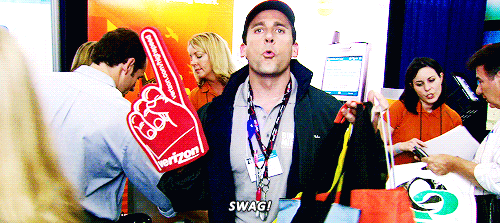To say the least, 2020 has been one of the most unique years most of us have experienced. The Covid-19 pandemic has forced the world to move to remote work and made companies fast track plans to do things digitally and virtually. The B2B marketing space has been very much affected by these changes. We asked our team for their predictions on what trends they believe will impact marketing plans in 2021 and beyond.
Chloe: Huge event budgets reworked or reallocated to digital
The pandemic has brought a swift shift away from in-person events. Tradeshows and conferences have moved to new online formats or been cancelled entirely. For a lot of B2B companies, these events represented a large portion of their marketing budget. They’re now having to either reallocate budget to digital tactics or try to adapt their plans to new online formats. I’m sure 2020 left a lot of these marketers scrambling. But with 2021 planning in the works or on the horizon, there’s plenty of time and space to thoughtfully and effectively adapt.

Brent: Using animation to help your B2B content stand out
The online world has always been a crowded place. With the influx of noise this year, being able to stand out has never been more difficult. With companies shifting even more towards online engagement, having killer creative is a major competitive advantage.
If you’re looking to try something new in 2021, consider investing in animation. Animated ads have more visual appeal and have the capacity to tell a story. A great looking ad can be impactful, but an ad with movement can substantially outperform static banners by as much a 267%. Using animation can also be a great way to breathe new life into your existing B2B content. That dense white paper no one is downloading? What if that same content was presented as an animated video on LinkedIn?
Kyle: New ways of creating one-on-one personalized experiences
As Chloe pointed out, in-person events aren’t going to be ramping up anytime soon. So how can businesses recreate the one-on-one interaction they’d typically have on the tradeshow floor? I’m not talking about the, “Hey, take this brochure and give me your email!” interaction. I’m talking about the, “Hey long-time customer. How’s business? What challenges are you facing?” interaction.
Over the last year, SMS marketing has quietly been growing in popularity. It may not be flashy, but SMS doesn’t face the same level of saturation or competition as email. Not only does it provide companies with a direct channel to engage with customers, but it provides customers with a direct channel to engage with businesses to ask questions, get support, etc.
Liza: Nurturing leads & existing relationships has never been more important
For many consumers and businesses, the decision-making process has changed when it comes to purchasing. While we’ve seen businesses get creative with new offerings and ways of operating, they’ll also have to adapt to a consumer who is facing their own series of changes. Without in-person interaction, connecting with existing and new customers through digital channels is more important than ever. Rethinking social media and email marketing strategies while thinking up new ways to demonstrate value virtually will be key.
According to a Mckinsey report released in October, “only about 20 percent of B2B buyers say they hope to return to in-person sales, even in sectors where field-sales models have traditionally dominated, such as pharma and medical products.” The pandemic has accelerated the shift to online sales for B2B and it’s going to be a permanent change.
Sourov: Recruiting marketing talent is going to be easier and better
One of the most exciting changes I’ve seen through 2020 is the shift to remote work. We’re seeing people moving away from Silicon Valley and New York City. This is great for business owners who will no longer need to be located in expensive city centers to be successful or recruit talent. In the next 2-5 years, I think we’ll see a geographic democratizing of talent in a way we’ve never seen before. Large employers such as Pinterest and Shopify are abandoning plans for increasing physical office space while others are making plans for half their team to remain at home. In theory, employers will be able to recruit talent from all edges of the world, allowing workers to avoid making the quality-of-life vs. cost-of-living trade-off that often comes with working in a major city.








